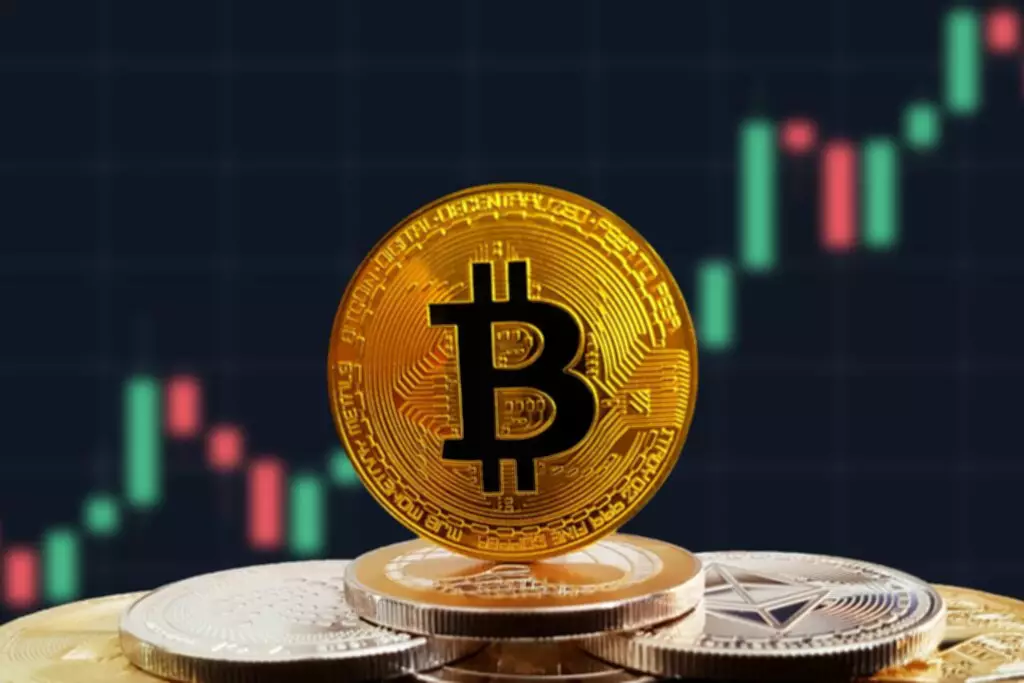Content
Our clients deserve our team’s best thinking and all the benefits of Key Private Bank’s disciplined, time-tested approach. Regulations have also helped shift investors into passive funds. In practice, it will make it more challenging for advisors to place their clients into higher-cost products, while using low-fee index products can mitigate an advisor’s risk. While full rollout of the rule has been delayed, we expect that the pressure for migration to the fiduciary standard will continue. Passive investors believe that the market is efficient, which means that a current security price reflects all available information. Since they assume there is no advantage to be gained by picking stocks or bonds, passive investors buy the entire market or market segment by holding index funds or exchange-traded funds that track the relevant index.

Passive investing removes the need to be “right” about market predictions and comes with far fewer fees than active investing since fewer resources (e.g. tools, professionals) are needed. By strategically weighing a portfolio more towards individual equities (or industries/sectors) – while managing risk – an active manager seeks to outperform the broader market. Active vs Passive Investing is a long-standing debate within the investment community, with the central question being whether the returns from active management justify a higher fee structure. You may be eager to decide whether active or passive investing is better. But like many aspects of personal finance, there’s no clear-cut answer.
Follow Bloomberg Markets
In a best-case scenario, passive investors can look at their investments for 15 or 20 minutes at tax time every year and otherwise be done with their investing. So you have the free time to do whatever you want, instead of worrying about investing. Let’s break it all down in a chart comparing the two approaches for an investor looking to buy a stock mutual fund that’s either active or passive.

The issue being argued is the return from different strategies, not the returns from different financial products. Fees vary between financial products, between investors, between countries, between years. They can be active traders of passive funds, betting on the rise and fall of the market, rather than buying and holding like a true passive investor. Conversely, passive investors can hold actively managed funds, expecting that a good money manager can beat the market. A 1998 study looking back at two decades of mutual fund performance demonstrated that on whole, actively managed funds underperformed the Vanguard 500 by 2% annually over 20 years.
Separate Accounts
Notice second where the market is priced in the first two crises, when the net debt is $0. In both investors got back into the market at prices lower than when they exited. Not only did they escape the depths of the crashes, but they also gained by the difference in exit / entry points.
Active managers don’t have to rely on arbitrage opportunities as compensation for their active efforts. Instead, they charge their fees whether they beat the market or not. They take advantage of the fact that everyone wants to beat the market, and they are really good at selling products claiming to do just that. The winners are the asset gatherers charging high management fees for something they are unlikely to deliver. While active management can theoretically help investors beat the market’s performance, the higher fees can cut into potential profits. Active investing involves paid human portfolio managers whose goal is to “beat the market” over time with their self-selected securities.
He would not make any adjustment to his asset allocation to correct for differences in risk. Possibly the largest problem is that they all discount investor returns whenever they feel the return is due to their list of ‘risk’ factors. The need for risk-adjusting is questioned further in below. Risk-adjusted returns may be of interest to academics, but they have no resonance in the real world.
Instead, you may want to consider investing in actively managed funds. At the individual sector valuation level, the S&P 500 Index has a 20-year average price/earnings ratio (the ratio of a stock’s price to its earnings per share) of 16.2. As of December 31, 2021, the price/earnings ratio was 22.8. FIGURE 5 illustrates that 9 out of 11 sectors in the S&P 500 Index are trading at a premium relative to their 20-year historical average.
Passive investments, which involve buying and holding investments for a long period of time , try to mirror a stock market index. Passive investors might choose to build their portfolio through a brokerage account, opt for a managed investment solution, or use a robo-advisor to constantly oversee and rebalance their investments. Passive investing is generally less work than active investing. Passive investors may simply “set it and forget it.” They can still rebalance and even adjust their portfolios for new goals, but typically don’t make many changes. Although investors may be able to successfully outperform passive market benchmarks some of the time, it’s unlikely they will be able to outperform those benchmarks all of the time. Active investing allows investors to build a portfolio that is customized exactly to their interests, preferences, and passions.
The Failure Of Track Record Investing
This is typically done through an exchange-traded fund , for example, an ETF that tracks the S&P 500® index. Passive investments are not actively managed by human portfolio managers, so any fees investors pay are generally lower. The active mutual fund is only a subset of all actively managed portfolios. Even if you prove that active funds under perform indexes, you have not proved that ALL active stock pickers under perform.
The wager was accepted by Ted Seides of Protégé Partners, a so-called “fund of funds” (i.e. a basket of hedge funds). The choice comes down to how much risk you’re willing to take for the possibility of higher performance. Titan’s editorial partners have cut their teeth at The New York Times, Wall Street Journal, Time, Inc., and Bloomberg. When it seems that one approach is consistently winning, market conditions change and roles reverse. Investors have been rushing into index-tracking strategies over the last several years.
- Combining the two can further diversify a portfolio and actually help manage overall risk.
- Almost all you have to do is open an account and seed it with money.
- Group-think within the confines of the money-management industry will lead to poor investments.
- With an actively managed fund, a fund manager tries to outperform a particular benchmark for stocks—such as the S&P 500, or for bonds, the Bloomberg U.S. Aggregate Bond Index.
- Notice second where the market is priced in the first two crises, when the net debt is $0.
- Titan’s editorial partners have cut their teeth at The New York Times, Wall Street Journal, Time, Inc., and Bloomberg.
Morningstar produces a similar yearly Mind The Gap report with less extreme conclusions. The underperformance is mostly because they measure ‘dollar-weighted’ returns. They weight the fund returns for smaller units of time, by the size of the fund. They conclude that investors pile into stocks at market peaks, and sell out at market bottoms.
So It Pays To Be Passive?
For the S&P 500, that average annual return has been about 10 percent over long stretches. By owning an index fund, passive investors actually become what active traders try – and usually fail – to beat. Due to human psychology, which is focused on minimizing pain, active investors are not very good at buying and selling stocks. They tend to buy after the price has run higher and sell after it’s already fallen.

That can be a serious problem, especially in down markets when overweighted, overpriced stocks begin to fall. We saw this in the 1970s with the energy sector, in the 1990s with technology, and more recently with financials. The lesson to be learned is that costeffective portfolio diversification – one of the major putative benefits of index investing – may not always be present in passive strategies. As noted earlier, active managers have delivered superior relative returns during prolonged periods. While passive funds have posted higher returns over the last several years, active and passive strategies have exchanged the lead in performance over a longer timeline. Our current market and geopolitical environment is making investment selection even more challenging.
Active investing suggests an investment strategy that consists of continuing buying and selling. Active investors purchase investments and, trying to outperform the stock market on a short-term basis, continuously monitor their activity in order to exploit profitable conditions. Could have more taxable capital gains because the portfolio manager may trade more often, making it more tax-efficient to hold actively managed funds in IRAs. As its name implies, this type of investing requires an active approach from investors.
Advantages Of Active Investing
Other results are rejected because it is decided the stockpicker’s holdings were more risky than the benchmark. A more risky portfolio is ‘supposed to’ generate higher returns, so its actual returns are dismissed. No academic papers measure the actual returns of investors. Instead they compare a metric they create for investor returns, with a synthetic benchmark that is risk-adjusted. The point of this is to normalize for the different risk levels. If returns over the business cycle are equal, who cares that in some years stock pickers under performed?
It is pretty widely accepted that some markets provide better stock-picking opportunities. It is a home truth that active management out-performs during stock crashes. Academics have widened the criteria to include both up and down markets Active or passive investing where there is wide dispersion of returns across the market and wide volatility of individual stocks (Gorman, et.al. and von Reibnitz). The most powerful way to outperform the market is by retreating to cash during major market crashes.
Morgan Advisor can help you understand the benefits and disadvantages of each one. Compare between 529 Plans, custodial accounts, financial aid and other education options to help meet your goals. Using an updated version will help protect your accounts and provide a better experience. “A lot of things that typically work in the early part of the cycle start to lag when the early phase dies out, and investors grow concerned about slowing growth and the Fed getting involved,” Canally says.
Review Your Portfolios Performance
Everyone gets the same 5% holding period return, which ignores flows. The holding period return, which ignores flows, is 5%, matching the index. It sounds like a theory of irrational traders and https://xcritical.com/ not very efficient markets. So markets tend toward an equilibrium where prices are boundedly efficient, where there is no more mispricing than at the level that would make arbitrage profitable.
And there are no other active investors to trade with other than Buffett, who makes a bid-ask market for the index, selling when it’s above his estimate of fair value and buying when it’s below fair value. Investors in mutual funds face a daunting decision – which fund? The only data available are historical results – yet even the funds warn that past results do not predict the future. It is unfair that their choice impacts the measured returns from active investment. If you presume that additions and withdrawals are market timing decisions then their effects should be included in the measured rate of return.
Portfolio Flexibility
One of the major benefits of passive investing is that it minimizes the mistakes investors can make when they react emotionally to every move of the stock market. Historically, passive investing has outperformed active investing strategies – but to reiterate, the fact that the U.S. stock market has been on an uptrend for more than a decade biases the comparison. Passive investors, relative to active investors, tend to have a longer-term investing horizon and operate under the presumption that the stock market goes up over time. Transparent – Passive investing is simple and easy to understand. If you are curious about the underlying investments, you can see holdings in both active and passive funds. To do this, the fund manager buys all, or a good sample, of stocks or bonds from the index, and holds onto them.
High dispersion should benefit active managers who can single out the winners, whereas a low number of home runs indicates stocks are moving together, which typically benefits passive management. However, you may prefer to actively invest during a bear market because active managers don’t have to stick with a certain set of stocks in a particular index. They may be able to find pockets of outperformance in various parts of the market, while the index-tracking funds will have to stick with a wide array of stocks in every sector across the market. However, individual stock selection may be more useful during mid- to late-market cycles. The war in Europe has only exacerbated concerns over inflation, powered by the run-up in motor fuels prices—factors all contributing to continued significant market volatility. In an economy where Volatility is the Next Normal , uncertain markets tend to favor an active investment approach, and professional management can help smooth out the rough ride.
Brian Beers is the managing editor for the Wealth team at Bankrate. He oversees editorial coverage of banking, investing, the economy and all things money. While S&P 500 index funds are the most popular, index funds can be constructed around many categories. For example, there are indexes composed of medium-sized and small companies. Other funds are categorized by industry, geography and almost any other popular niche, such as socially responsible companies or “green” companies.
Click here for the Funds’ prospectus to learn about the specific investment objectives, risks, and charges and expenses. Investors often argue that small cap stocks are more inefficiently priced than large cap stocks, so that the pricing errors can be more easily be exploited. This suggests there should be evidence of persistence among small cap portfolio managers. However, no real evidence of reliable positive persistence exists among small cap managers according to studies by Davis and Quigley and Sinquefield .